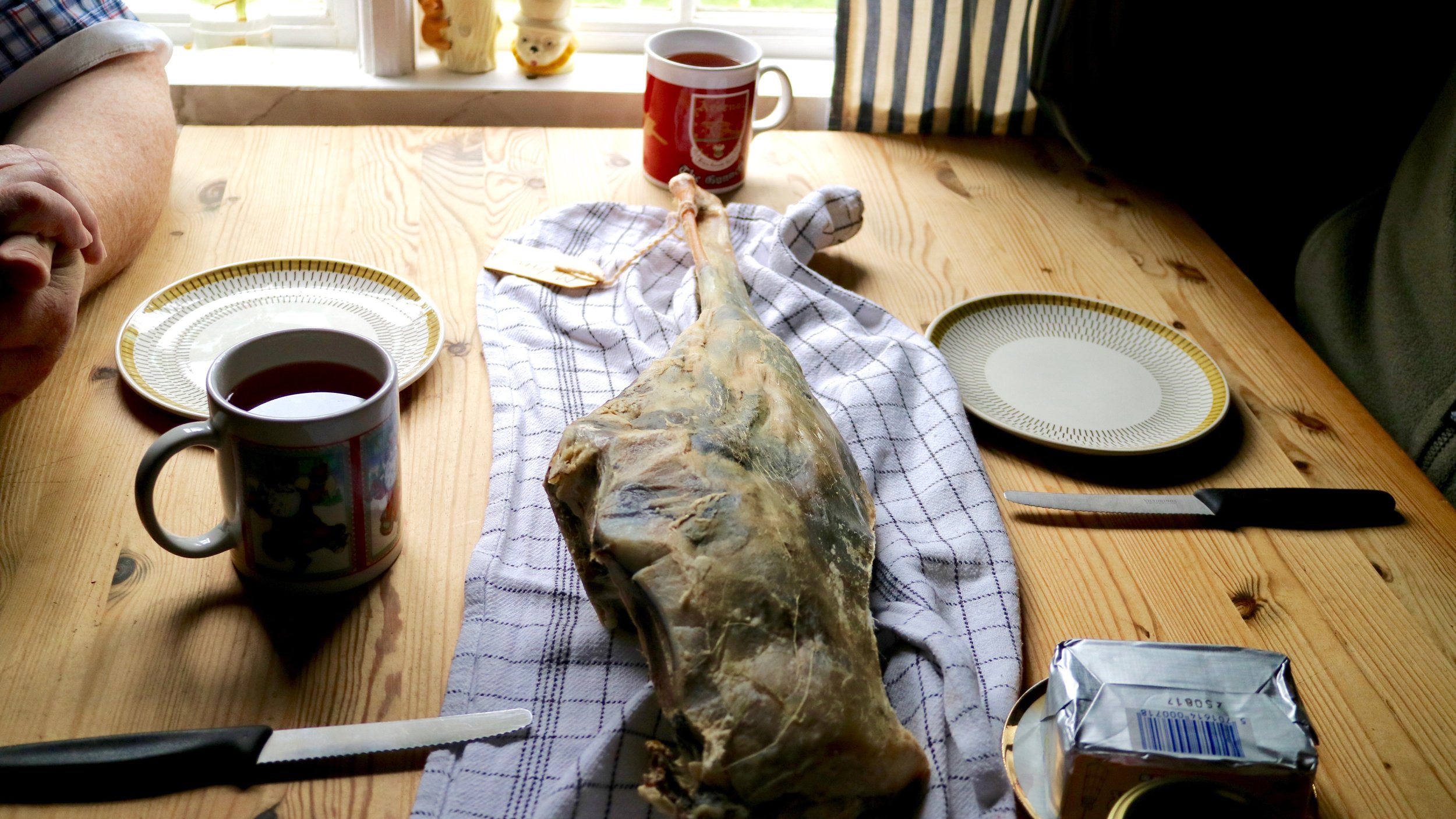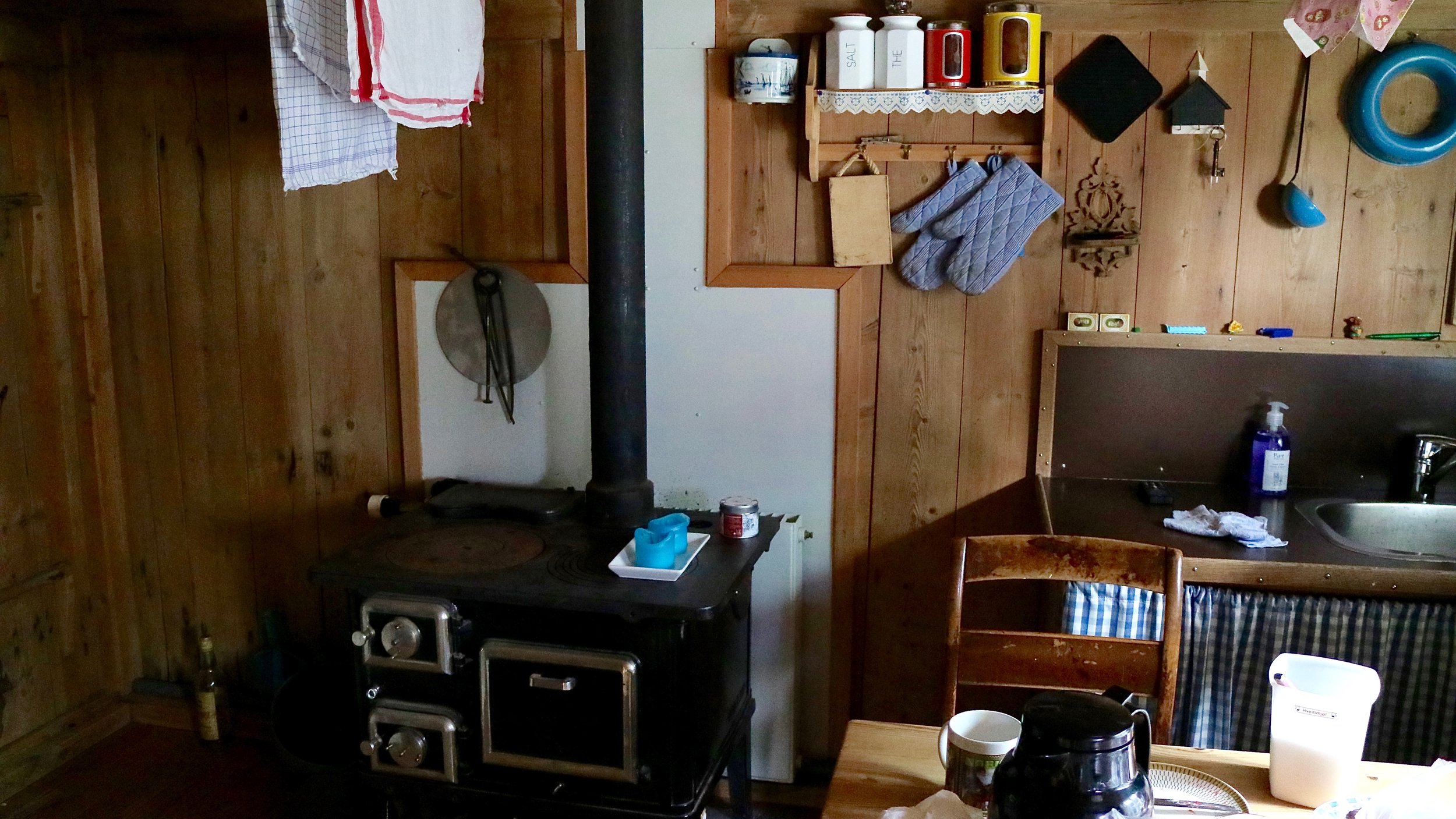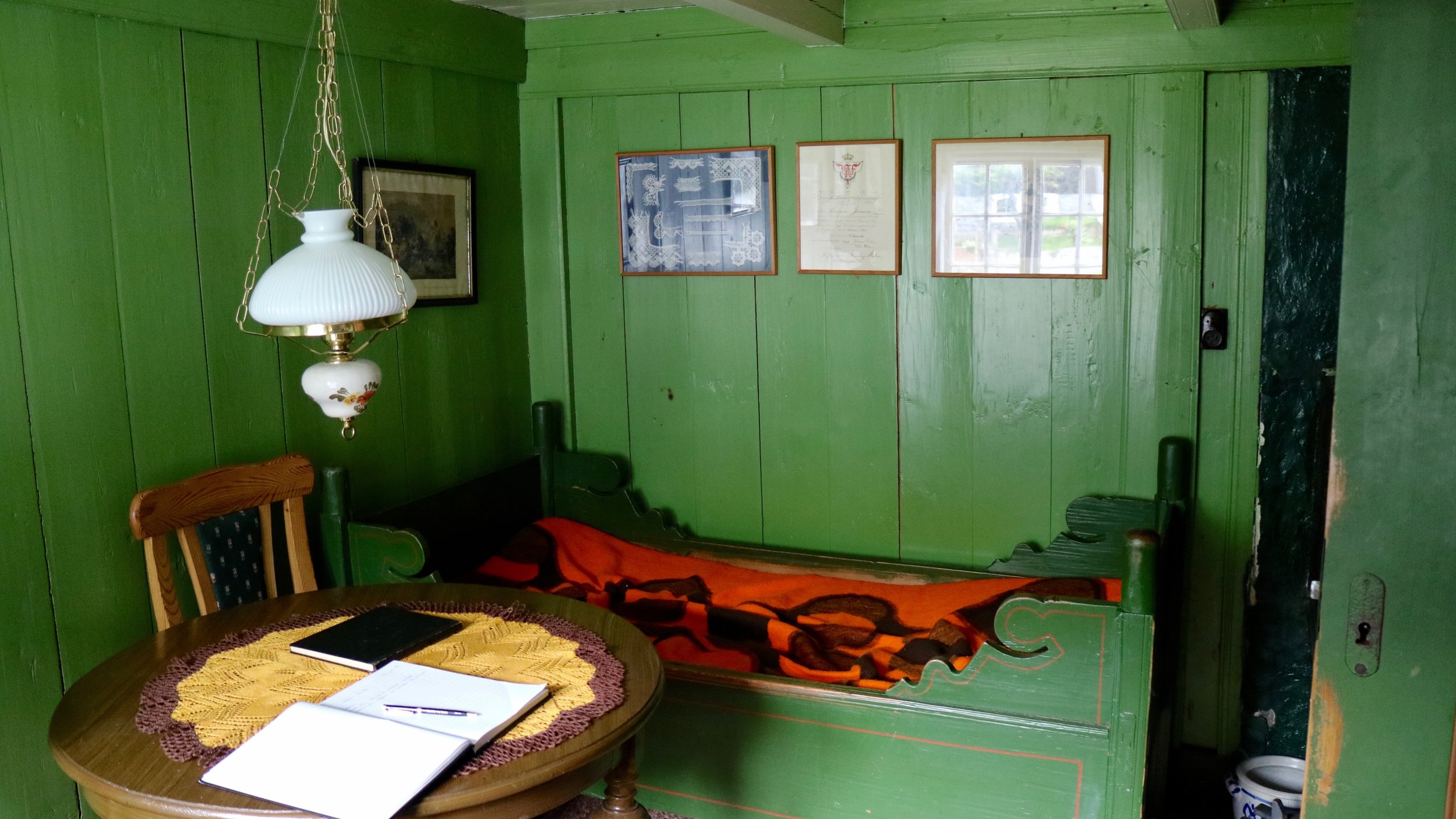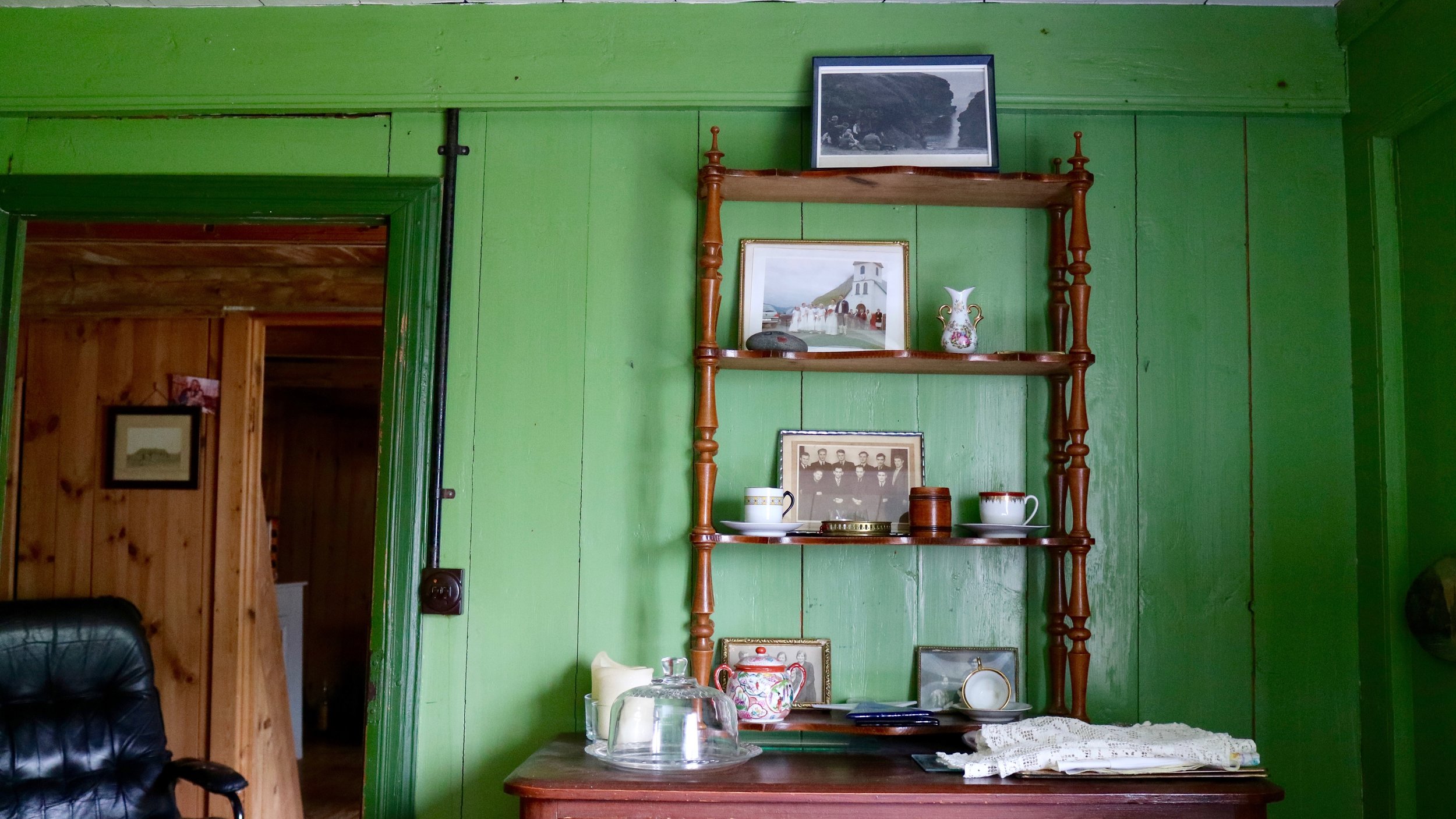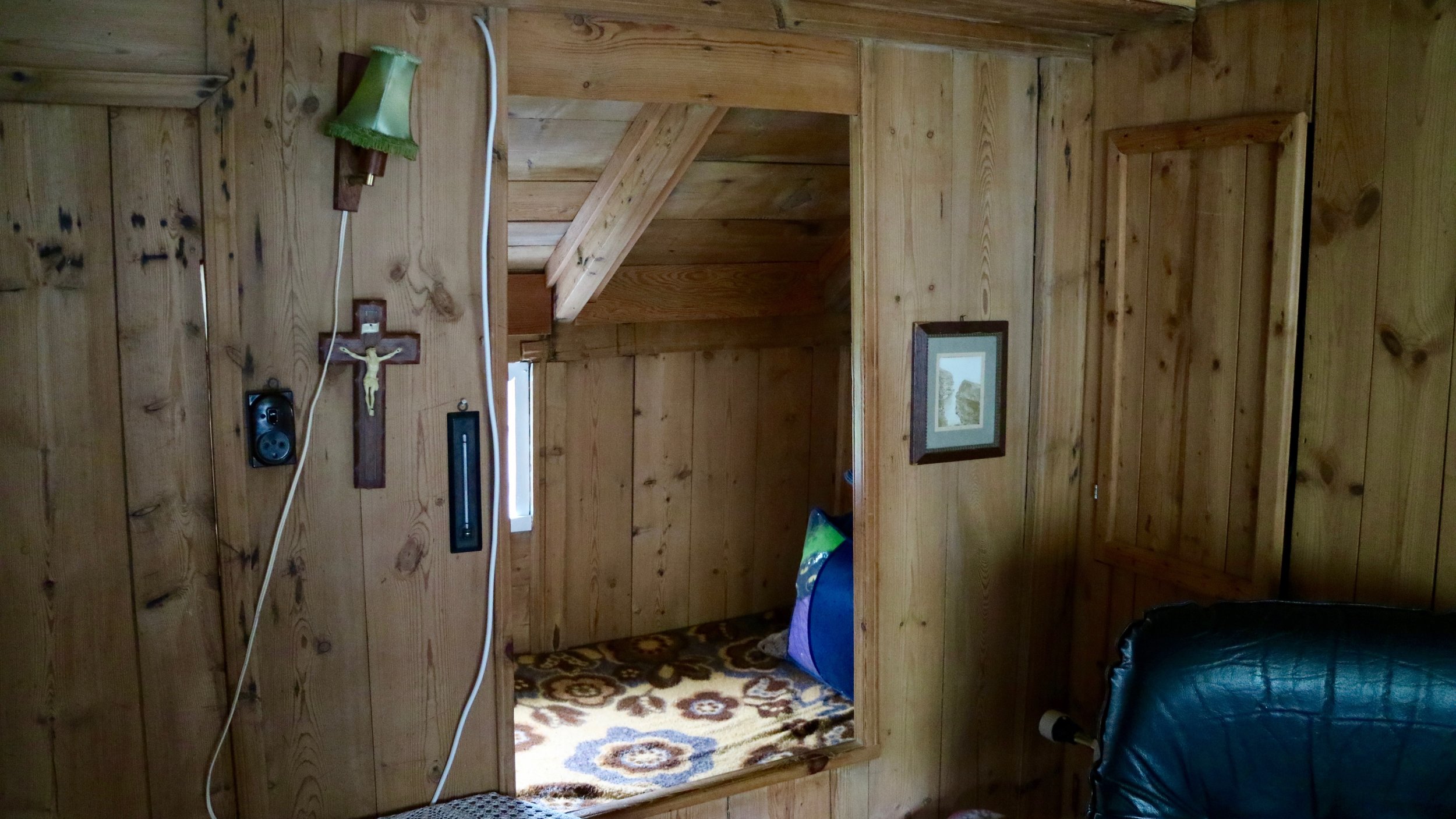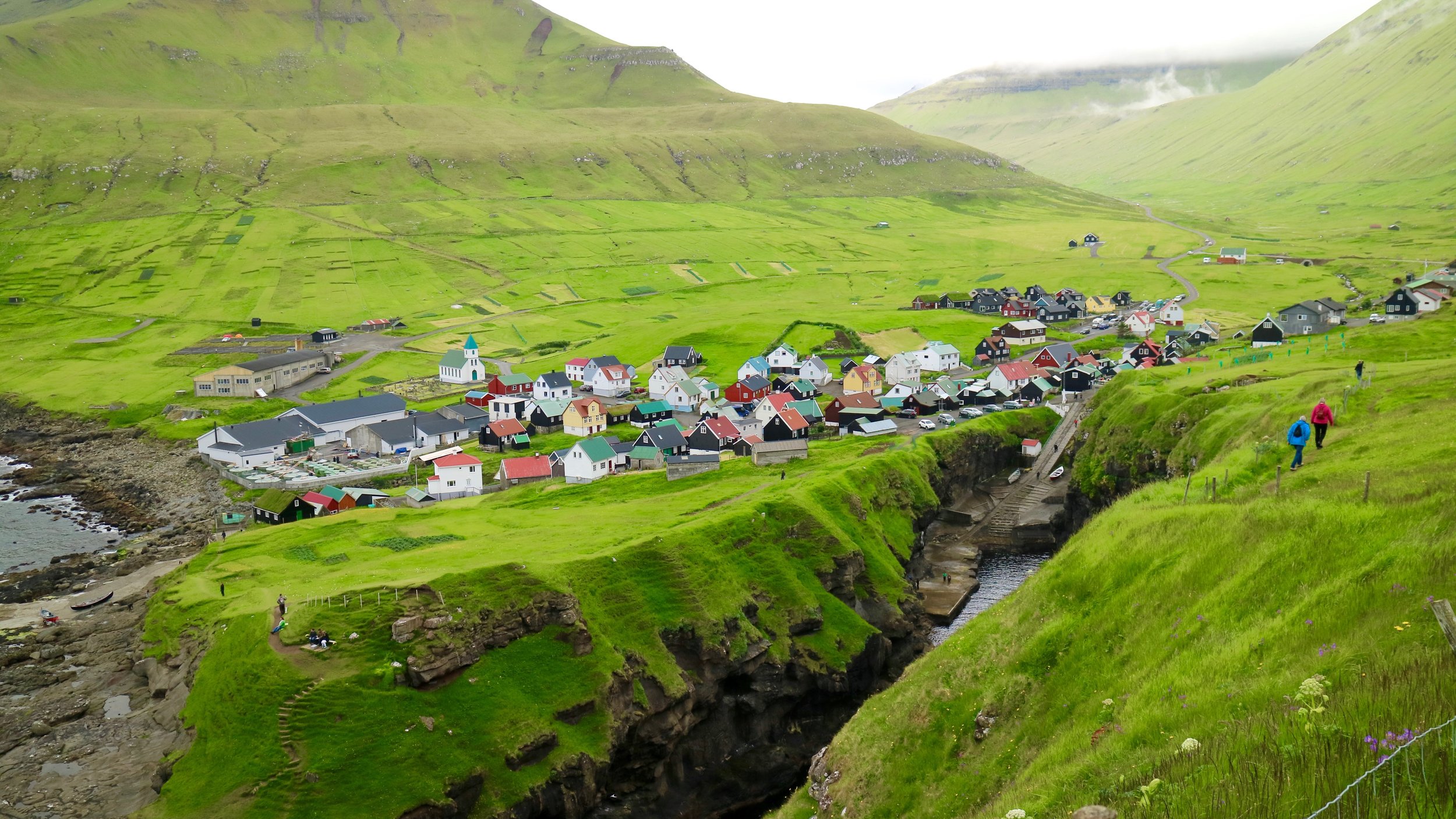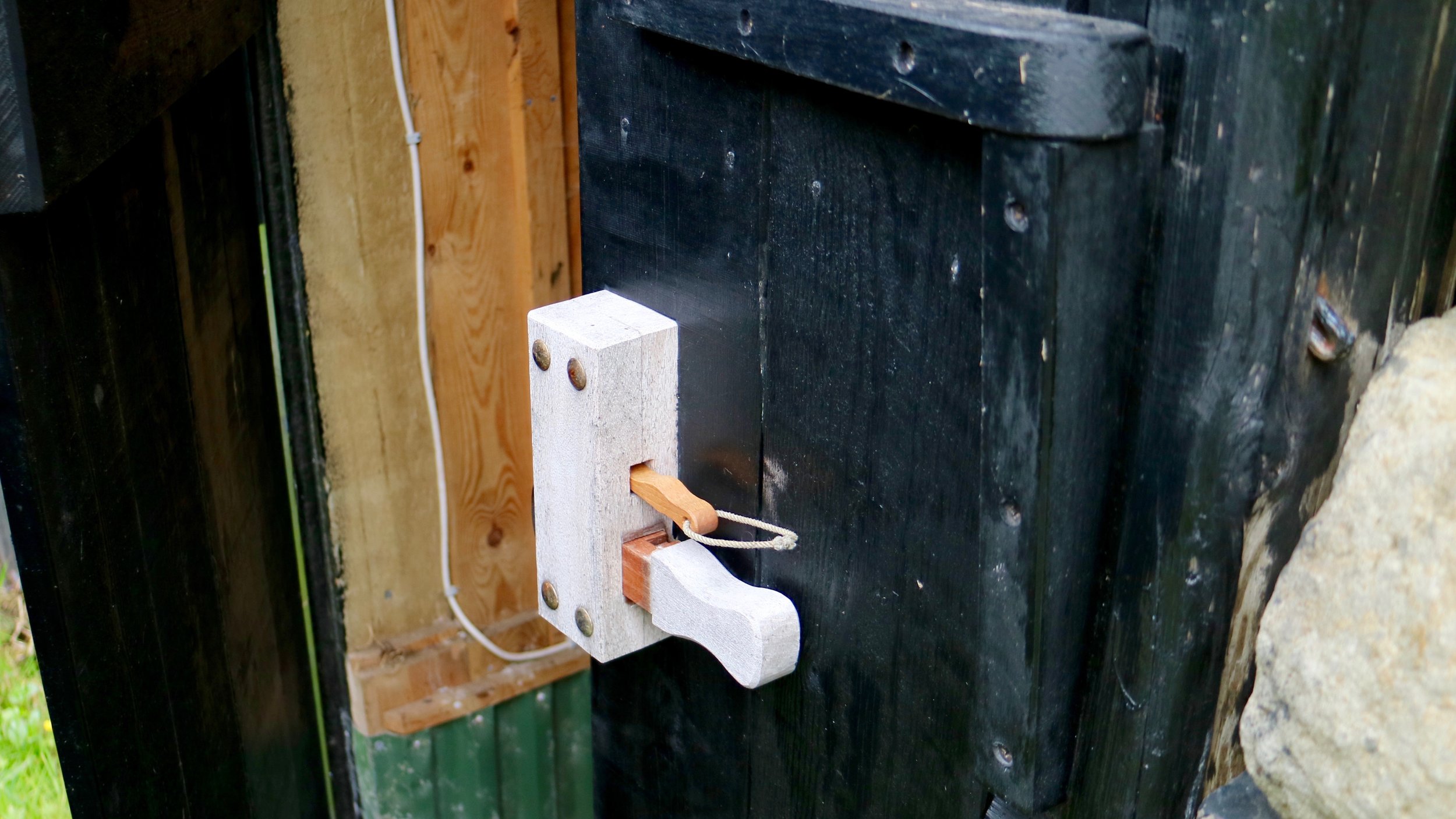Arriving at Gjógv, picture-book village in the northeast of Eysturoy, named after and famous for its 200-meter seawater-fed gorge. Sweeping, that gorge. But irrelevant at the present moment. Today, we go for a hidden treasure. A private home. Jógvansstova, said to be Gjógv’s oldest house.
Our friend Malan Jógvansdóttir has invited us over. Jógvansstova, she says, has been owned by the family for ages. Houses getting passed on from generation to generation: likable and common practice in the Faroe Islands.
Grass roof, timber and stone walls. Low ceilings, tiny beds and sleeping-berths. Family photographs, pantry and kitchen stove. Jógvansstova, truly a cozy place. While we sit down at table, Malan’s getting ready to serve a Faroese delicacy: Skerpikjøt, dry aged Faroese lamb, best when you slice it very thin, pieces put on bread.
During dessert (chocolate cake) I picture what life was like in this village a hundred years ago. Helpful: Fólkateljingar, the Faroese population censuses. One from Gjógv, 1916, including house names, 237 inhabitants (Gjáarfólk) and characterizations such as merchant, peasant, mason, carpenter, auxiliary postman, needlewoman and clerk.
My favorite entry goes with Poul Nolsøe Biskopstø, house number 10: „Landowner, Telefonen“. For house number 42, Jógvansstova, Peter Joensen, Marie Joensen and Susanne Frederikke Joensen are listed, i.a. as fisherman, landowner and housekeeper.
The Jógvansstova we are sitting in currently is 172 years old, Malan tells me. „But a great deal of its wood already belonged to an older version of the Jógvansstova. Supposedly, there has even been a third Jógvansstova before that, probably same place.“ According to the Sunda municipality, Gjógv was first mentioned in 1584, but people seem to have lived close to the gorge long before.
As we say goodbye, Malan draws my attention to another distinctive Faroese feature. A wooden lock on one of Jógvansstova’s walls, called Hvølpalás. From the outside, it looks like nothing special. Inside: a structure that resembles a modern cylinder lock. In order to open the Hvølpalás, you need to insert a fitting key-like spike. An amazing piece of craftsmanship, the one in front of us actually built by Malan’s grandfather – from Gjógv.
Hvølpalás: Historical sketch of the lock
Jógvansstova is a private home. You are interested in life on the Faroe Islands in the olden days? Visit, for example, the open-air museum Hoyvíksgarður


